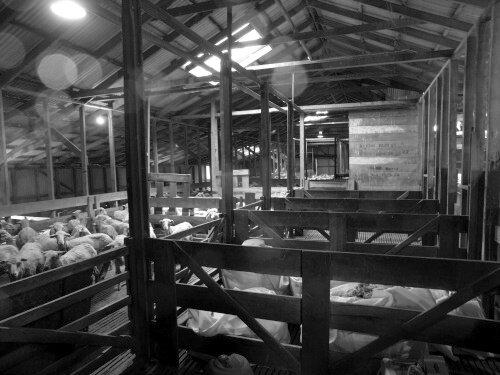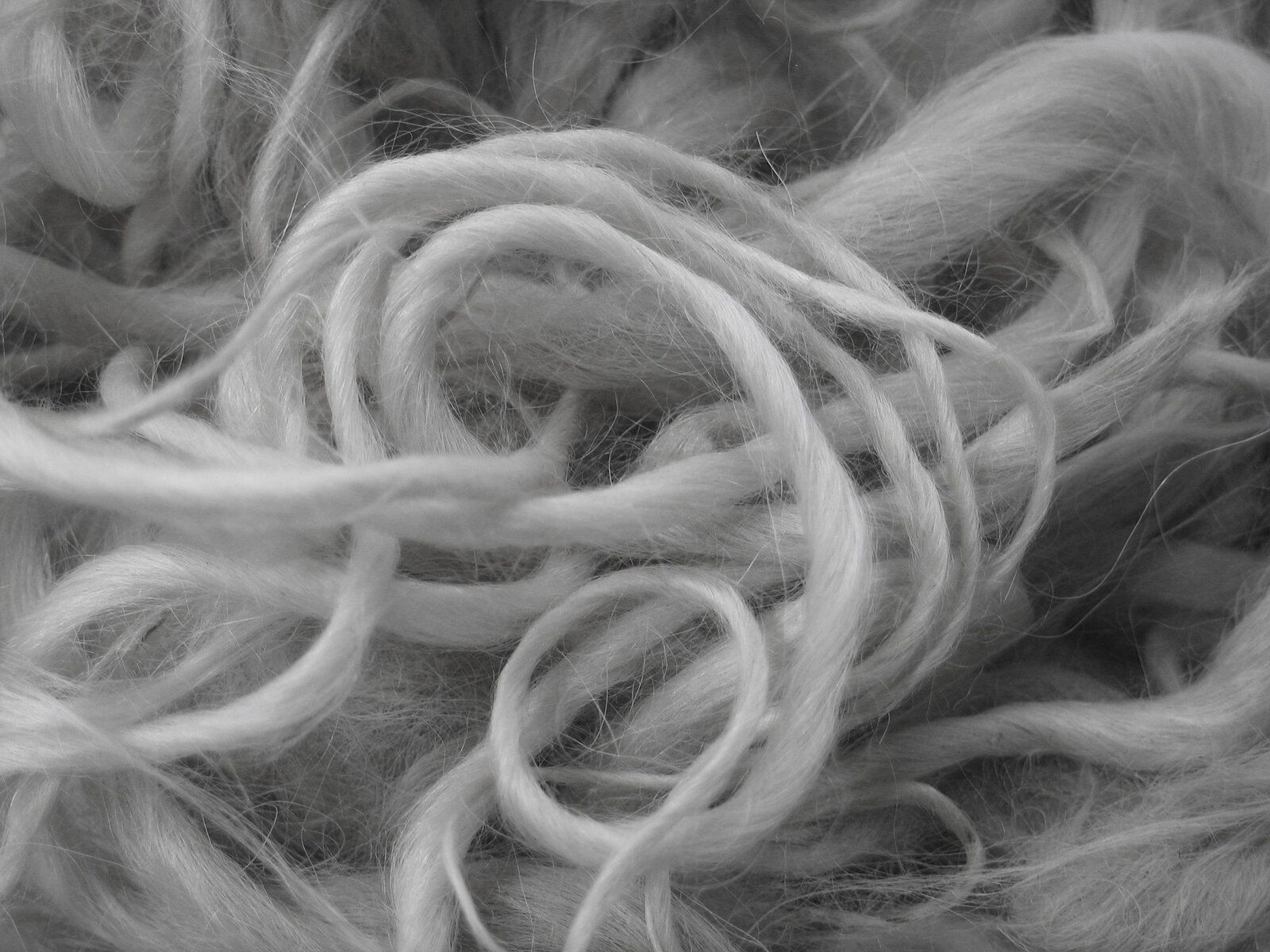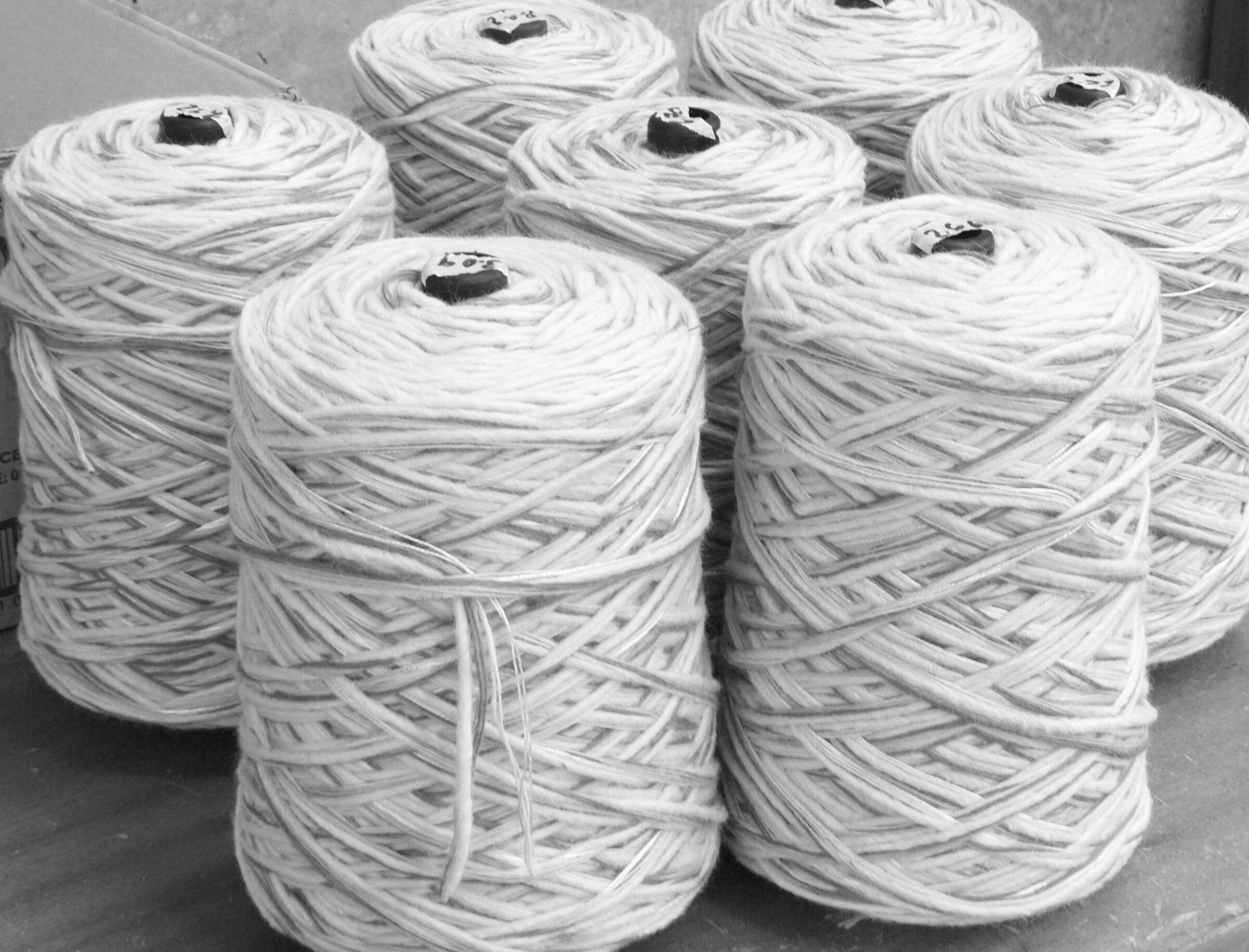From Raw Wool to Yarn
Firstly, the wool is scoured, then carded and divided up into “slivers”. From there the slivers are spun into individual threads. These threads can be used individually or plied together to make thicker yarn.
The wool is spun into different “counts” or weight per meter. We call it 'tex', which is the measure of weight per 1000 meters. E.g a 400 tex yarn would weigh 400 grams per 1000 m (or 4 grams/meter). From there, based on the style, stitch height and row gauge, we can work out the weight of yarn required. The yarns weights we use vary from 1.5 kg/m2 to 6kg/m2.
For the finer carpet textures we like to use “wool singles” - a 380/1 tex yarn. However, our favourite type is the felted wool yarn, used to provide chunkier textures, bringing exceptional results in rugs as well as wall-to-wall carpets.
Felted Wool Yarn
Felted yarn differs from the spun wool traditionally used in carpeting a lot. In the felting process, which is only unique to wool, the wool fibres shrink which improves the strength and durability of the yarn.
In this process, wool is scoured and carded but the rovings are not spun, instead they go through the felting process which requires agitation, heat and detergent, and results in fibers being interwoven. The rug or carpet made of such yarn sits at the very top 5% of the market due to the strengthened wool qualities & integrity the felting process gives to the yarn, appealing texture as well as due to the innovative colours this yarn can be easily dyed to.
We source the felted yarns from a manufacturer who specialises in creating felted yarns, in different thicknesses and types of wool (standard, merino, angora, etc), based in Christchurch - so again, everything is produced locally.
About New Zealand Wool
Wool is a natural renewable fibre with unique qualities. We believe it is the best fibre for producing high quality floor coverings.
The main reason why New Zealand wool is so valued worldwide is because it is naturally very white and it is pure. This means that no harsh chemicals are used during processing and it is also not blended with other fibres to make it go further. New Zealand wool’s unique whiteness is ideal for producing light and sophisticated fashionable shades and it also has the ideal properties for dye absorption.
The complex structure of wool ensures that colour is drawn right into the very heart of the fibre where it becomes locked in at a molecular level. Because the colour is locked into your New Zealand wool carpet, it can’t be rubbed off by walking, furniture movement and other scuffing activities and will retain its good look longer.
Exceptionally white, clean wool is essential when it comes to achieving fashion colours. New Zealand sheep graze on open pasture under conditions that produce the whitest natural wool. Contaminants like black fibres are avoided, allowing light, fashionable shades that are not possible with wool from other sources.
Because of its high protein content, wool naturally absorbs dyes which make their way into the wool and attach themselves to the many receptive sites it offers. This natural affinity for dye is the reason why New Zealand wool carpets come in a myriad of hues and design combinations. The depth of shade and clarity of colour from New Zealand wool cannot be achieved on any other fibre.
The wool yarn that CRONZ uses is relatively thick and has coarse fibres that make our rugs hard-wearing and durable. Wool has a natural fat coating that makes it dirt repellent. This combination of factors means that your rug can be walked on, played on and lived on for many years.
Because wool does not burn like other fibres, wool rugs are ideal for locations with special fire requirements and do not need to be treated with flame retardants. Another advantage of wool is its low risk of triggering allergies, since it traps dust and dirt particles.
View our range of colours, dyed on the felted wool yarn here.









